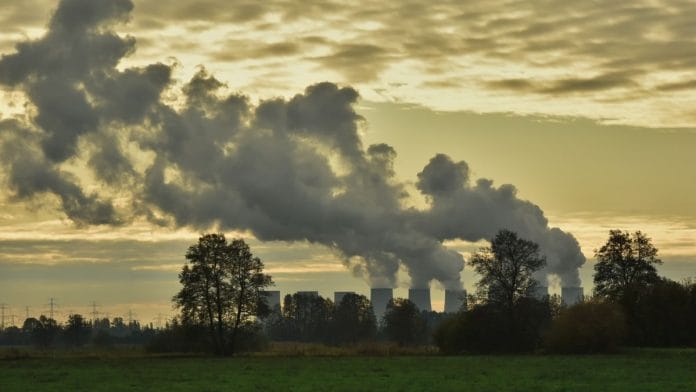Thank you dear subscribers, we are overwhelmed with your response.
Your Turn is a unique section from ThePrint featuring points of view from its subscribers. If you are a subscriber, have a point of view, please send it to us. If not, do subscribe here: https://theprint.in/subscribe/
The climate crisis is no longer a distant issue—it’s an urgent, escalating reality that is disrupting lives, economies, and entire ways of life across the globe. We see the signs everywhere: rising temperatures, relentless floods, protracted droughts, and increasingly ferocious wildfires. For vulnerable coastal communities and densely populated urban centers, these changes are no longer hypothetical; they are happening daily. Despite repeated pledges from world leaders, many policies still fall short of what’s needed to tackle this crisis. As the 2030 sustainable development goals (SDGs) deadline looms ever closer, it is abundantly clear that addressing climate change is not optional. It is the linchpin of a sustainable future for all.
When the United Nations launched the SDGs in 2015, climate action was framed as one goal among many. Today, however, we understand that protecting the climate is the foundation of every SDG. UN Secretary-General António Guterres’s recent warning resonates louder than ever: “We are hurtling toward disaster, but if we move now with bold, concerted efforts, it’s not too late.” This is particularly true for countries around the world, which face both severe climate risks and complex development challenges. For these nations, addressing these issues together is not a matter of choice—it is survival.
Consider the example of the Maldives, where rising sea levels threaten to erase entire
communities, or countries like Bangladesh and the Philippines, where storms have grown more frequent and intense. According to the Asian Development Bank, if meaningful adaptation strategies are not implemented, climate-related damage could erase over 10% of the global GDP by 2050. For many nations, resilience is not a theoretical goal; it is essential to their survival. This serves as a stark reminder that global cooperation must go beyond rhetoric and lead to concrete, inclusive action.
Over a decade ago, wealthier nations committed to mobilizing $100 billion annually by 2020 to support developing countries in their efforts to mitigate and adapt to climate change. Unfortunately, this promise remains unmet, and the consequences are deeply felt. Countries like Bangladesh, which contribute little to global emissions but suffer disproportionately from climate impacts, are now struggling to implement the necessary adaptation strategies. For these nations, unfulfilled promises of financial assistance mean that they are left to fend for themselves in the face of escalating risks.
This financing gap is more than a missed target; it is eroding trust. As UN Climate Change High-Level Champion Mahmoud Mohieldin pointed out, “The trust gap between developed and developing nations can only be bridged with concrete action, especially in fulfilling climate finance pledges.” According to a recent OECD report, without stronger mechanisms to fulfill these commitments, mistrust between nations will only continue to deepen. For countries around the world, which already face limited resources, the impact of this financial shortfall threatens not only their climate resilience but also regional stability and the global community’s ability to work together to tackle climate change.
The need for emission reductions has never been more urgent. The 2015 Paris Agreement set the goal of limiting global warming to 1.5–2 degrees Celsius—a target that requires halving global emissions by 2030 and achieving net-zero by 2050. Yet, despite over 100 countries committing to these targets, a recent report from the International Energy Agency finds that we are still far from meeting these goals. A striking contradiction has emerged: between 2019 and 2022, G20 countries, which are responsible for nearly 80% of global emissions, doubled their fossil fuel subsidies. Driven largely by energy security concerns, countries like China and India face the challenge of balancing development needs with climate commitments. Indian Prime Minister Narendra Modi has rightly emphasized that “For climate action to be truly effective, developing nations need technology and resources to make cleaner energy a viable alternative.” This reveals the necessity for a “just transition,” one where all nations—especially developing countries—are equipped with affordable green technologies that allow them to pursue development without sacrificing the planet.
Aligning climate action with the SDGs is essential, especially as the world grapples with
interconnected environmental and development challenges. Clean energy, biodiversity
restoration, and climate-resilient infrastructure are not just solutions to climate change—they also address broader SDGs like health, equity, and economic stability. This approach has the potential to deliver cascading benefits, from improving public health to reducing poverty and fostering inclusive growth. A recent report from the World Resources Institute shows that climate-resilient infrastructure doesn’t just promote economic stability; it also paves the way for a more sustainable and equitable future.
What is needed now is accountable leadership. Climate action must be at the core of sustainable development policies, not just an afterthought. This is no longer a political or economic matter; it is a question of collective survival. Achieving the SDGs by 2030 will require countries to not only meet their climate promises but also address financial gaps and ensure equitable access to clean technologies.
With the 2030 deadline fast approaching, the stakes have never been higher. Integrating climate and development goals is no longer just necessary—it is fundamental for securing a stable,resilient future. The question is no longer whether we can reach these goals, but whether we are ready to make the necessary commitments to ensure a livable planet for future generations.
These pieces are being published as they have been received – they have not been edited/fact-checked by ThePrint.


